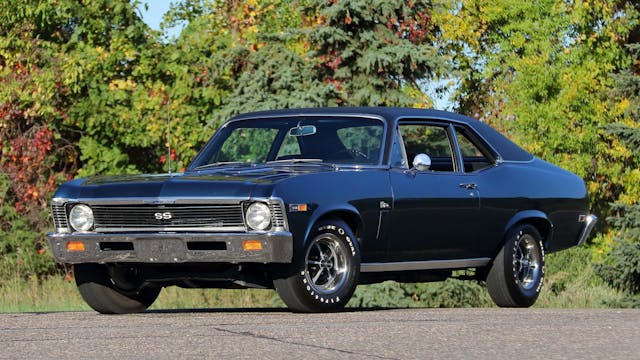These Popular Classics Are Tracking Straight in a Mixed Market
The last five years have been pretty crazy. There was a pandemic and a whole bunch of other newsworthy items, but even sticking with the classic car market—since that’s what we at Insider know best—things have been topsy-turvy. Aside from some uncertainty in the earlier months of 2020, prices rose at a fast clip for just about everything interesting on four wheels, and kept rising in 2021 and 2022 before slowing down in 2023 and so far in 2024. Many vehicles have even come down in value after their pandemic boom highs, but on average the #2 (“excellent”) value for vehicles in the Hagerty Price Guide is 33% higher than it was five years ago, in the spring of 2019. That outpaces inflation: A hundred dollars five years ago translates to over 120 bucks today.
That doesn’t mean every classic car jumped in value by a third, though. In fact, while quite a few of the market’s most popular classics have been quite active, prices for many others have held steady. The values of these cars have for the most part chugged along at their own pace rather than responding to the whims of the market, or after a brief blip settled back into their prior trajectory. All these examples serve as a reminder that while big numbers can impress when the hammer falls, the meat of the market hasn’t fluctuated as much as some of the top lines would suggest.
Measured by insurance activity, the 1965 Ford Mustang is the most popular classic car in America, and the second most popular is the 1966 Mustang. America’s pony car has indeed had an active five years, with the median condition #2 value up 28 percent over that time. Meanwhile, America’s sports car—the Corvette—has been more stable, at least in its earlier C1 (1953-62) and C2 (1963-67) iterations. The median #2 value for C1s is up 11% over the past five years, and the average up nine percent. For C2s, the median #2 value is up less than one percent, and the average is actually down three percent.
Keeping in the Chevrolet camp, in contrast to the 1967-72 Chevy C/K pickups, which are up an astonishing 72 percent on average over the last five years, muscle car mainstays from the same period have been more understated. The 1968-72 Nova is up just 11 percent, and over the last decade just 13 percent. The median #2 value for 1970 Chevelles is up less than three grand over the last five years. A few other GM muscle staples have been relatively stable as well, with the median #2 value for 1964-67 Pontiac GTOs down three percent and 1968-72 GTOs up 15 percent.



Turning back the clock again to the 1950s American cars, this has generally been a sleepier segment of the market, both before and during the 2020s. A ’50s favorite—the 1957 Chevy Bel Air—has barely moved since 2019. The 1956-57 Lincoln Premiere hasn’t either, while other era-defining cars like the 1957 Chrysler 300C (three percent), 1957-58 Mercury Turnpike Cruiser (two percent), and 1958-60 Edsel (three percent) have also barely nudged.
Even further back, both the Ford Model T and Model A have been mainstays of the old car hobby for longer than almost anything else because they’re so, well, old. The market for them is mature, and they’ve spent the last five years tracking straighter than most other classics. Average #2 values for the 1909-27 Model T are up less than one percent over the last five years. The 1928-31 Model A is up 18 percent, although the median is up 12 percent and many versions haven’t moved at all.


Even with all the movement, both up and down, during this very eventful decade so far, some of our favorite classics have been a lot more consistent. For buyers and sellers of these favorites, it’s always reassuring when a car brings a price that feels right.
***
Check out the Hagerty Media homepage so you don’t miss a single story, or better yet, bookmark it. To get our best stories delivered right to your inbox, subscribe to our newsletters.



My all time favorite car is a 1967 Corvette Coupe, with the 435 HP 427 engine.
Seems many are still above there 2020 levels at this point for what we have here.